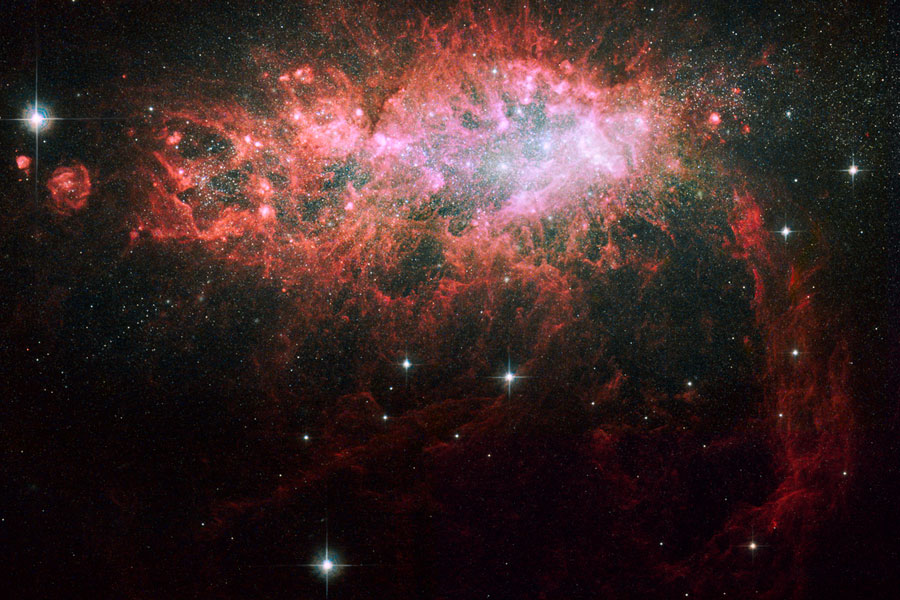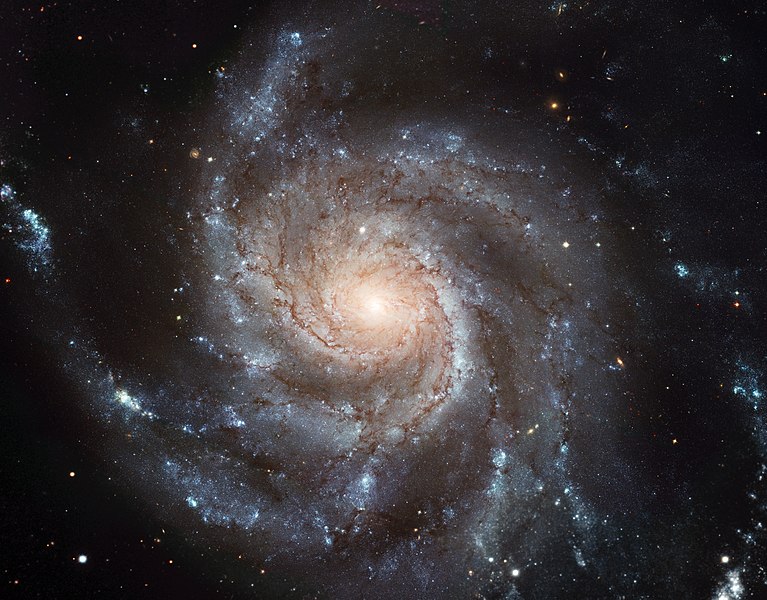Galaxies are collections of celestial matter, such as gas, dust, etc. held together via gravitational attraction. Their shapes and types range from spirals, to rings, dwarfs to huge sizes and are classified under spiral, elliptical and irregular. A few years ago, it was proposed that there are also "dark galaxies", or galaxies made up of entirely dark matter.
Going through each of the types of galaxies and what makes them unique enough to be classified separately, let's start with irregular galaxies. Irregular galaxies do not have a structured form that lends itself to a particular shape. They are comprised of partially ionized hydrogen, caused by UV emitting stars. Wind plays an important part in these galaxies causing, from what I can understand, some of the gas to be blown out from the galaxy, changing the mass and density of the galaxy. Stars seemed to be formed in bursts in these galaxies, with long periods of rest in between. Irregular galaxies tend to be more faint have have less mass than other galaxies, as well as containing more gas and less metals.
Next are elliptical galaxies. Elliptical galaxies get their name from their shape and contain older stars (globular clusters!). Additionally, because there is not much gas or dust contained within these galaxies, elliptical galaxies tend not to form stars. They tend to be found in clusters of other galaxies and it may be the case the elliptical galaxies are formed from galaxy collisions. While elliptical galaxies are generally less blue (since the stars contained within are red and colder), some elliptical galaxies have shown to be quite blue due to older stars fusing helium in their cores, causing a higher overall temperature. Many of these galaxies contain supermassive black holes at their center, with other elliptical galaxies awaiting confirmation on the presence of one.
Centaurus A - An elliptical galaxy? Astronomers are still unsure
As a note of transition, there are also lenticular galaxies, which are something like an "in between" of an elliptical and a spiral galaxy. They contain many old stars and do not actively form new stars, but they also have semblances of spiral arms. Also, they have more dust than elliptical galaxies and have a similar luminosity to speed ratio but offset by the fact that the stars in a lenticular galaxy are much older.
Finally we come to spiral galaxies. Spiral galaxies have a large concentration of stars towards the center of the galaxy, with star forming regions in the arms. They have a rotating disc (unique to spiral galaxies), which contains newly formed stars. Additionally, they too have supermassive black holes at the center. Our own supermassive black hole still has not been observed that well, though we have found evidence that ours is not as massive as black holes in other galaxies. Spiral galaxies may also have a "bar", which are found in the majority of spiral galaxies, though it's not entirely clear what the function of such a bar is, however bars are indicative of the galaxy being fully formed.
The pinwheel galaxy
Obviously there is much more to say about galaxies past what I've covered here and there is still much more to study about galaxies.



No comments:
Post a Comment